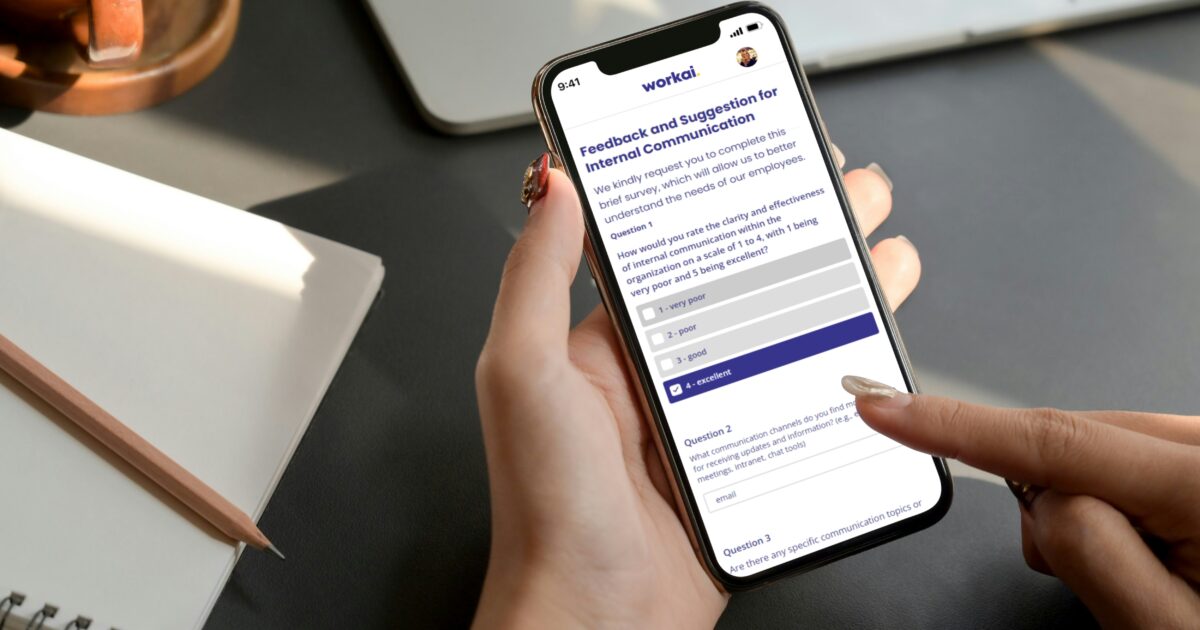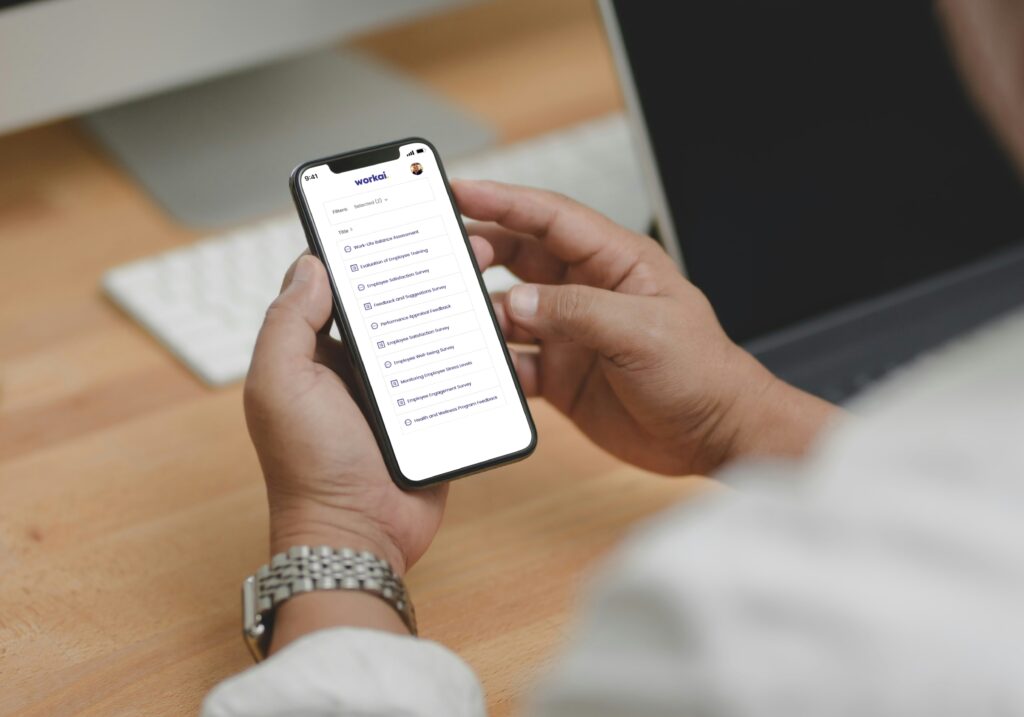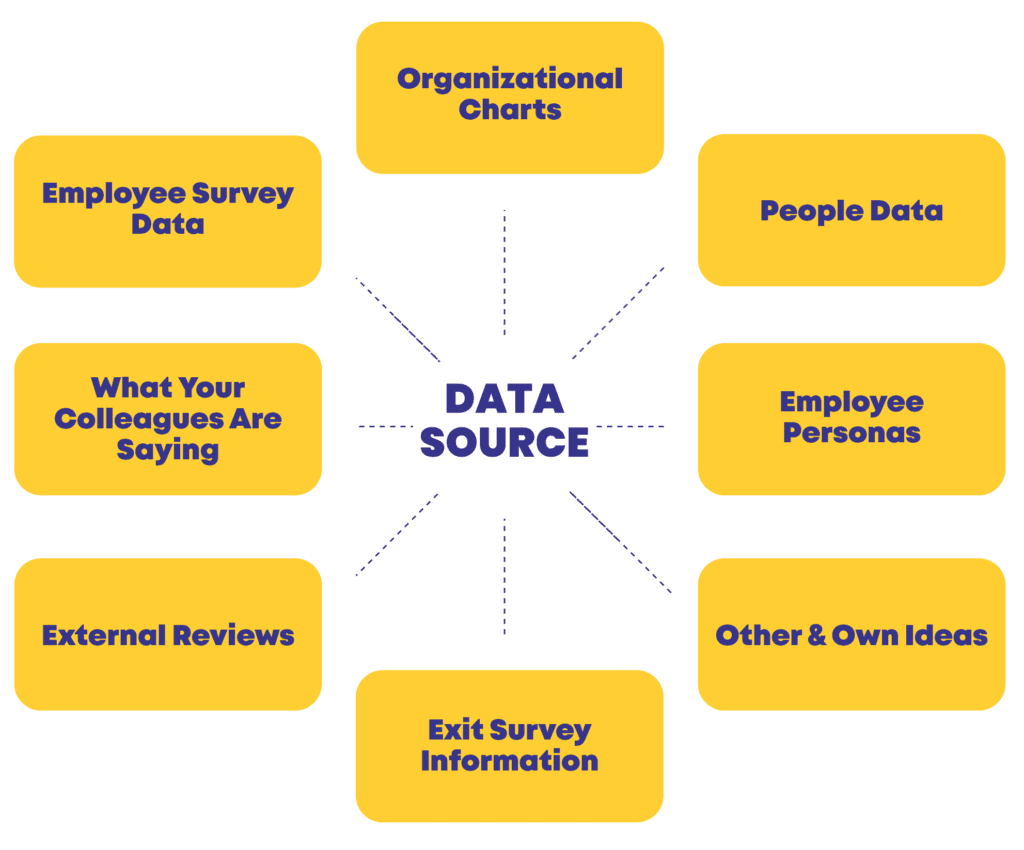
Top 8 data sources for internal comms: leverage insights and employee feedback
Is your company truly listening to its employees? In today’s fast-paced business environment, gathering and acting on meaningful insights is essential. This article explores how to use employee feedback to enhance internal communication, ensuring messages resonate with employees and align with organizational values. Learn how to assess existing data, turn insights into actionable outcomes, recognize knowledge gaps, and use comprehensive data to craft effective communication strategies. Create a cohesive, engaged workplace where every employee feels valued and integral to the company’s success.

1. Understanding insights and employee feedback
Insights are more than just numbers and information; they’re crucial tools that help guide decision-making and strategic planning. David A. Garvin, a professor at Harvard Business School, teaches us that insights are essentially actionable data that empower organizations to engage their employees more effectively, deepen their understanding of individual roles, and create a workplace where everyone feels they truly belong.
Garvin explains that when organizations transform employee feedback into practical strategies, they not only improve workplace practices but also align their strategic goals and boost overall performance. This practical approach facilitates organizational learning and adaptability, highlighting just how essential insights are for fostering a workplace where every employee feels valued and plays a crucial role in the company’s success.
But what comes next? How can we specifically use these insights to enhance internal communication within our organization? Let’s dive into practical ways to apply these insights, ensuring that every bit of employee feedback and data collected actively contributes to a more informed, responsive, and cohesive internal communication strategy.

2. Discovering what you have
Before making any strategic moves or applying insights, it’s crucial to assess what information you already possess. This step involves a thorough review of the data at hand, such as past interview experiences or employee feedback. Understanding the feedback already gathered can be instrumental in shaping the direction of your internal communication strategies. Here are some practical steps to make this assessment as effective as possible:
Compile and Categorize Data: Organize all existing feedback and data into categories such as employee satisfaction, communication effectiveness, and role clarity. This categorization helps identify trends and common themes that require attention.
Identify Communication Gaps: Look for any discrepancies between what employees understand and what they need to know. These gaps often highlight areas where communications can be improved to better meet employee needs.
Evaluate Feedback Over Time: Analyze how perceptions and opinions have changed over time. This can indicate the effectiveness of past communication strategies and guide future modifications.
Solicit Clarifying Feedback: If the data isn’t comprehensive enough, consider conducting follow-up surveys or interviews specifically designed to fill in the missing pieces. This can involve asking more targeted questions that delve deeper into previously uncovered issues.
Set Benchmarks for Improvement: Use the insights gained from past feedback to set clear, measurable goals for your internal communication efforts. For example, if previous feedback highlighted a lack of understanding around certain company policies, a goal might be to increase clarity and awareness through specific informational campaigns.
Assessing and understanding the information you already have allows you to align your internal communication strategies more effectively with the real-time needs and expectations of your employees. This ensures that every message resonates with your team and reinforces the core values and objectives of your organization, making every communication effort more strategic and impactful.

3. Transforming feedback into effective communication
Effectively transforming employee feedback into actionable outcomes is vital for internal communication. By leveraging data from internal assessments, companies can achieve higher engagement levels, clearer understanding of employee roles, and stronger organizational cohesion. This involves prioritizing insights that significantly impact the organization, such as creating detailed job descriptions to address role confusion or implementing flexible work policies to combat burnout and improve job satisfaction. Planning and communicating these initiatives clearly across the organization ensures tangible improvements.
Additionally, recognizing and addressing knowledge gaps is crucial. This involves critically assessing existing assumptions within the organization and questioning everything from employee concerns to HR priorities. Identifying these gaps allows for targeted improvements and ensures a robust, responsive internal communication strategy. For example, if employees feel disconnected from management, more transparent and frequent communication may be needed. Similarly, targeted communications can clarify uncertain HR policies, bridging the knowledge gap. This comprehensive approach keeps internal communications aligned with the evolving needs of the organization.
4. Meaningful insights
The essence of meaningful insights lies in their ability to inform strategic decisions. To extract such insights, a robust framework of research, measurement, and evaluation is indispensable. These insights are pivotal for upholding and advancing the high standards of internal communications within an organization. They must be derived from comprehensive data collected across various organizational levels — from recruitment metrics and employee tenure to feedback from daily operations.
By using this information judiciously, you can craft communication strategies that are not only targeted but also inclusive. Such strategies ensure that messages resonate well with the entire workforce, addressing specific needs while fostering a unified organizational culture. This holistic approach ensures that every piece of communication is not only informative but also reinforces the organization’s values and goals, enhancing overall engagement and effectiveness.

5. Interesting data you can gather
Gathering a variety of data types can provide a comprehensive view of your organization and help enhance internal communication strategies. Here are some key data sources and examples of how they can be useful:
Employee Survey Data: Employee surveys can reveal valuable insights into job satisfaction, engagement levels, and areas of concern within the organization.
Example: If surveys indicate low satisfaction with the current health benefits, this data can prompt a review and potential enhancement of the benefits package to boost morale and retention.
Organizational Charts: Organizational charts provide a clear view of the company’s structure, including reporting lines and departmental hierarchies. This information can help identify potential communication bottlenecks and areas where leadership development is needed.
Example: Identifying that middle management has too many direct reports can prompt restructuring to balance the workload more effectively.
People Data: This includes recruitment and retention figures, performance metrics, and demographic information. Analyzing this data can help in identifying trends and issues within specific departments or the organization as a whole.
Example: High turnover rates in the sales department might suggest management issues or a need for better training programs, prompting targeted retention strategies.
What Your Colleagues Are Saying: Informal feedback and anecdotal evidence from peers can uncover issues not captured in formal surveys. This type of data is often gathered through casual conversations and observations.
Example: Informal chats reveal widespread confusion about a new software tool, highlighting the need for additional training sessions to ensure smooth adoption.
Exit Survey Information: Exit surveys provide reasons why employees are leaving, offering critical insights into organizational weaknesses and areas for improvement.
Example: If many departing employees cite a lack of career advancement opportunities, it can highlight the need for better career development programs and internal mobility opportunities.
Employee Personas: Creating detailed profiles of different employee types based on roles, communication preferences, and motivations helps tailor internal communications to meet their specific needs.
Example: Knowing that remote workers prefer concise, mobile-friendly video updates ensures that important information reaches them effectively and keeps them engaged.
External Reviews: Feedback from external reviews, such as customer satisfaction surveys or third-party audits, can offer an outside perspective on organizational performance and areas needing improvement.
Example: An external audit identifies inefficiencies in customer service, prompting internal reviews and subsequent process improvements to enhance service quality.

Other and Own Ideas: This category includes results from employee engagement activities, feedback from training sessions, insights from leadership discussions, and unique data collection methods like Net Promoter Scores (NPS) and pulse surveys.
Example: Feedback from a team-building event suggests the need for more frequent inter-departmental projects to foster collaboration. Additionally, pulse surveys gather real-time opinions on new remote work policies, allowing for timely adjustments based on employee feedback.
Collecting and analyzing this diverse set of data ensures a holistic understanding of the organization’s health and employee sentiment, enabling more targeted and effective internal communication strategies.
Conclusion
Effectively leveraging employee feedback and other insights is crucial for enhancing internal communication and creating a cohesive, engaged workplace. By thoroughly assessing existing data, identifying communication gaps, and setting clear goals, organizations can make informed strategic decisions. Prioritizing impactful insights, developing action plans, and ensuring clear communication across the organization address key issues such as role clarity and employee burnout. Regularly questioning assumptions and gathering up-to-date insights ensure that internal communications stay relevant and effective. Using comprehensive data from various sources fosters a unified organizational culture, reinforcing values and goals. This holistic approach transforms insights into actionable outcomes, driving continuous improvement and making every employee feel valued and integral to the company’s success.

AWARDED FOR THE OUTSTANDING DESIGN AND EXCELLENT USER EXPERIENCE
Workai’s deployments in 2018, 2021 & 2023 has been chosen as one of the top 10 best intranets in the world by Nielsen Norman Group – read more.
